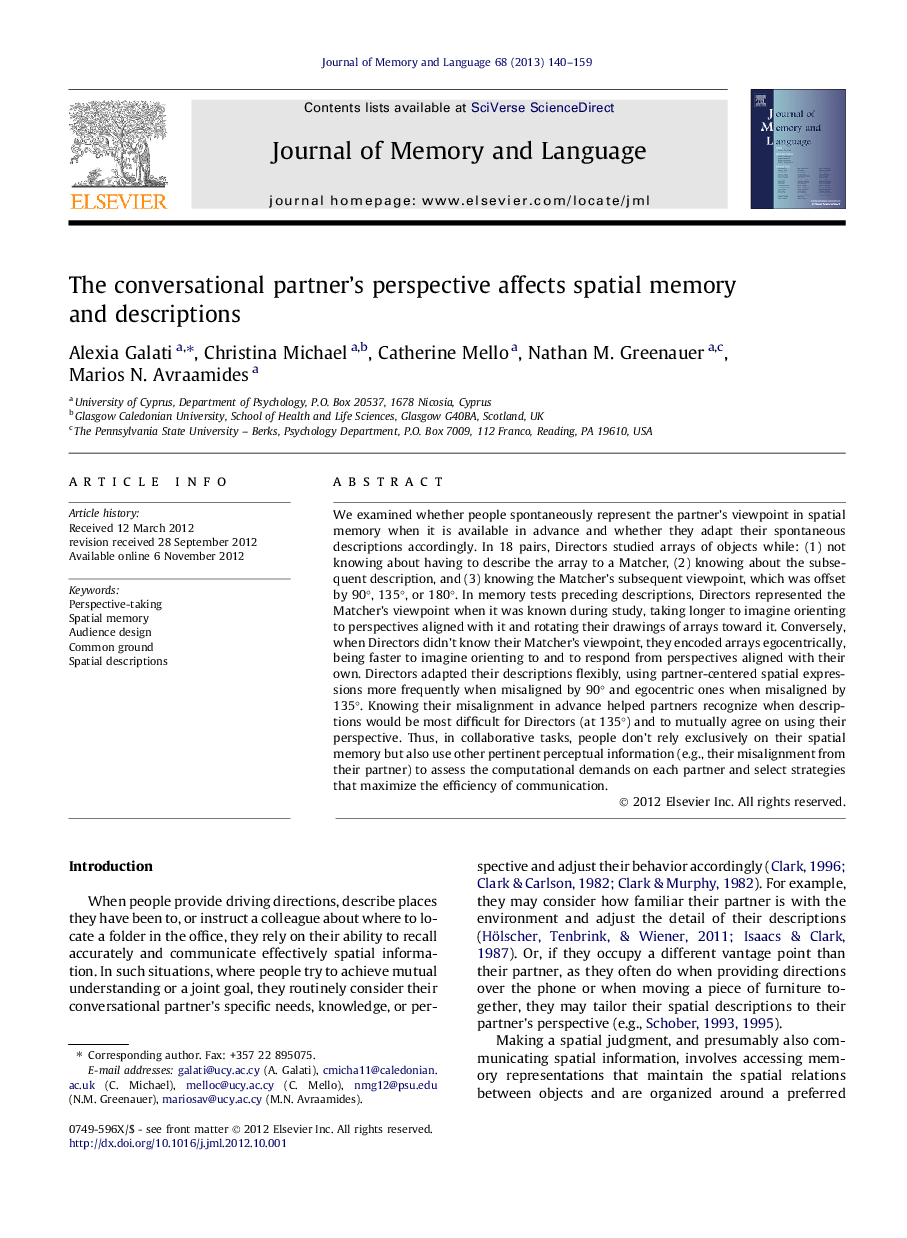| کد مقاله | کد نشریه | سال انتشار | مقاله انگلیسی | نسخه تمام متن |
|---|---|---|---|---|
| 931926 | 923049 | 2013 | 20 صفحه PDF | دانلود رایگان |

We examined whether people spontaneously represent the partner’s viewpoint in spatial memory when it is available in advance and whether they adapt their spontaneous descriptions accordingly. In 18 pairs, Directors studied arrays of objects while: (1) not knowing about having to describe the array to a Matcher, (2) knowing about the subsequent description, and (3) knowing the Matcher’s subsequent viewpoint, which was offset by 90°, 135°, or 180°. In memory tests preceding descriptions, Directors represented the Matcher’s viewpoint when it was known during study, taking longer to imagine orienting to perspectives aligned with it and rotating their drawings of arrays toward it. Conversely, when Directors didn’t know their Matcher’s viewpoint, they encoded arrays egocentrically, being faster to imagine orienting to and to respond from perspectives aligned with their own. Directors adapted their descriptions flexibly, using partner-centered spatial expressions more frequently when misaligned by 90° and egocentric ones when misaligned by 135°. Knowing their misalignment in advance helped partners recognize when descriptions would be most difficult for Directors (at 135°) and to mutually agree on using their perspective. Thus, in collaborative tasks, people don’t rely exclusively on their spatial memory but also use other pertinent perceptual information (e.g., their misalignment from their partner) to assess the computational demands on each partner and select strategies that maximize the efficiency of communication.
► We manipulated people’s advance knowledge of the partner’s misaligned viewpoint.
► Known viewpoints were encoded but not used as an organizing direction in memory.
► Descriptions varied according to the computational demands of perspective-taking.
► The partner’s spatial viewpoint is represented and used flexibly in communication.
Journal: Journal of Memory and Language - Volume 68, Issue 2, February 2013, Pages 140–159